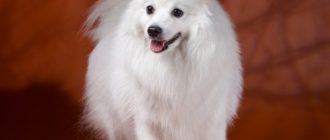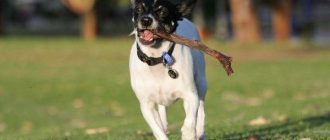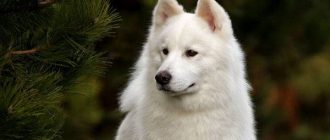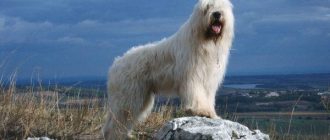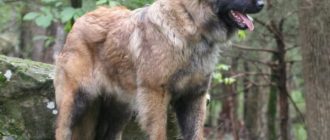Assessment of breed characteristics
Contents
| Adaptability Definition of how easy a dog is. can adapt to changes in life. |  |
| Shedding Level Level and frequency of hair loss in animal. |  |
| Level of tenderness Level and amount of tenderness and affection that the dog gives back in return for attention to itself. |  |
| Need for Exercise Daily Activity Level dogs. |  |
| Social need Required number of dog contacts with other animals as well as people. |  |
| Housing ratio Factor that determines the level of noise and other inconvenience that the dog can deliver to the owners in the ratio apartment size to dog size. |  |
| Grooming Number of bathing, combing, as well as necessary number of professional grooming sessions required the dog. |  |
| Friendliness in an unfamiliar environment society with strangers or in an unfamiliar environment. |  |
| The tendency to bark The tendency to bark and its frequency and volume. |  |
| Health Issues Potential Health Status dogs. |  |
| Territorial tendency of the dog to protect his house, yard or even a car owner. |  |
| Cat friendliness A trend towards cat tolerance and reduced manifestation of hunting instincts. |  |
| Intelligence Dog’s ability to think and solve emerging difficulties (not to be confused with learning!). |  |
| Education and training Level of difficulty in training a dog perform certain actions. |  |
| Friendliness for children Factor determining how much the dog friendly to children, whether she likes to play with them and endure some children’s pranks. |  |
| Game activity The concept is determined by its very name, and, usually found in almost all dogs. |  |
| Observing Dog’s ability to detect presence a stranger in his territory. |  |
| Friendliness for other dogs Dog’s tendency to find common language with other relatives. |  |
Brief description of the breed
Welsh Corgi is a short dog with an elongated body and erect big ears. In their appearance, representatives of this The breeds are very similar to the fox. This image is successfully emphasized round dark eyes with a characteristic black rim. Pembrokes have legs straight, which can not be said about cardigans. As a rule, the tails of these dogs are stopped, even when they are relatively short from birth, you must follow the standard breed. Welsh Corgi Pembroke appeared around the twelfth century. This makes him more youthful than direct Kindred – Welsh Corgi cardigan. Some history scholars dogs suggest that the name of the breed comes from Welsh the words “Korg” are dwarf. Thick and soft coat may have red, sable, fawn or black and tan color with characteristic for this breed are white marks. Ideally, Welsh Corgi growth should be about 25-30 centimeters at the withers, and weight can vary from 12 to 15 kilograms. Welsh Corgi average length and has a downy undercoat. The length of the coat and its appearance may vary slightly. For example, some representatives breeds have a furry edge on the ears, others have a neck original ruff. Some Welsh Corgi have wavy hair, and others are direct. But all this does not affect the nature and general characteristics of the dog. A distinctive feature of pembrokes is a mark on back in the form of a saddle, which is often called the “fairy saddle”.
Welsh Corgi Photos:
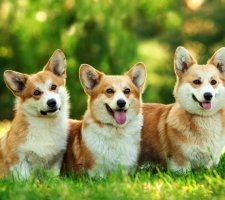

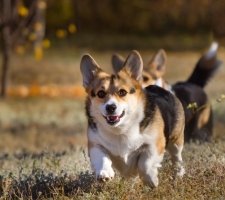
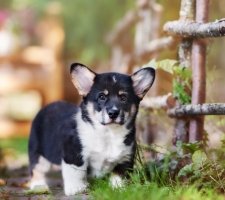
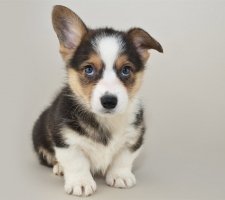
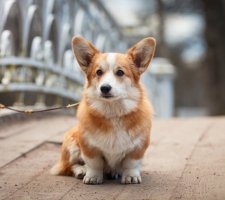
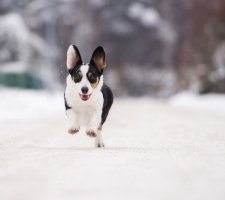

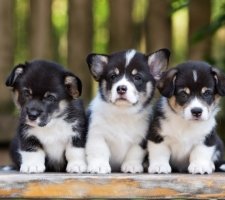 Photo of Welsh Corgi dogs |
Photo of Welsh Corgi dogs |
Origin history
Welsh Corgi has a fairly rich history. His ancestors were brought to England from the mainland in 1107 by Flemish weavers, who eventually settled in southwestern Wales. The breed has common roots with Keeshond and Chow Chows, Finnish and Pomeranian, as well as with the Norwegian Elkhound, whom originally bred to help shepherds when grazing sheep and large cattle. Because of the physique of the corgi, it’s very appreciated among the shepherds. These dogs also helped to drive large flocks of geese to the market. Over time, they fell in love the shepherds who took their rightful place as a pet and a real family member. The similarity of the Pembroke and the Welsh Corgi cardigan is no coincidence. Both breeds were crossed in the early nineteenth century when puppies cardigans were sold to farmers in the Pembrokeshire and Carmartenshire regions. Mass breeding of these breeds began at the beginning of the twentieth century. Modern breeders do not allow incest of two breeds dogs, keeping a separate Pembroke pedigree and Cardigan: The English Welsh Corgi Club was established in 1925. year. Welsh Corgi Pembroke and Welsh Corgi Cardigan were recognized an independent breed by the English Kennel Club in 1934. Queen Elizabeth II treated this breed with special trepidation, despite the fact that shepherd dogs brought a lot of trouble Buckingham Palace. It is the royal court’s special attitude towards pembroke allowed the popularity of this breed to fly especially high compared to a cardigan. American Kennel Club recognized the Welsh Corgi in 1934 and assigned him to the shepherd group dogs. Two years later, the first club of fans of this breed. Today, the Welsh Corgi is a dog that exhibits special abilities in agility, command execution, she became a true friend to thousands of families.
Welsh Corgi Character
Welsh Corgi, although a relatively small dog, she is a very broad and kind soul. Their character and behavior has developed mainly based on the fact that over time the ancestors of this breed were engaged in grazing, were active lives, were constantly on the move. Today, Corgi is still quite They are popular on various farms, but they are especially popular. among active families. This is understandable to passive people, with Corgi’s limited free time, of course, will not work. These dogs get along well with other pets. They are unsurpassed cope with the tasks of guard dogs. Welsh Corgi – these are dogs with their own “I”, they have their own opinion and want, to be reckoned with. But their main desire is to please people, especially close. Observing the behavior of the Corgi, you can see how these amazing dogs change their behavior: from clownish to insanely serious. Despite the highest level of activity welsh corgi, they don’t have to carry out a huge amount physical exercises. To maintain health and good moods will be quite a very small amount of active walks, games or other exercises. Representatives of this breed adapt perfectly to different living conditions. They are excellent they feel on farms, in private houses with their own yard, in apartment or even in a hostel. The main thing is that your pet does not interfere to others. But you need to understand that regardless of location of stay, the dog needs to be walked daily fresh air, play with her, and go out into the park at least once in week. We mentioned that Corgis can do fine without active exercise but active mental stimulation of this cannot be said. Corgi owners must provide pet friendly enough logical, interactive games. Otherwise, the character of the pet can spoil sharply, from which both surrounding people and furniture will suffer, as well as Houseware.
Maintenance and care
Welsh Corgi is very easy to care for. Their wool is not very long It requires only a weekly combing. This is quite enough to remove dead hairs. The phases of active molting in Welsh Corgi come twice a year. In this period, of course, it is necessary to comb a pet much more often. Pembrokes belong to very clean dogs, so most owners bathe about once every two to three months. You need to check regularly Corgi ears condition for signs of contamination, irritation or infections. They must be cleaned with a special solution according to the appointment of a veterinarian. In no case should you use for auditory canal cleaning with a cotton swab! oral cavity also involves weekly care. Mostly cleaning required teeth. The procedure will help rule out dental diseases, in including the formation of tartar, as well as the occurrence characteristic halitosis. If the pet does not grind claws in a natural way, then they need to be trimmed by yourself. Usually do it once a month.
Training and training
Welsh Corgi have a strong-willed character. They used to get what what they want. Therefore, in the learning process you will need a lot patience and endurance. The main assistant in training will be rewards in the form of goodies and, of course, in the form of praise. Please note that when training a dog, you need to completely forget about rudeness and aggression, which will have a negative effect. The animal should enjoy the activities, therefore it is better conduct short but more frequent classes that will not annoying pet. Training dogs of this breed suggests a certain systematic nature. Need to move from simple to complex. After mastering the basic commands and tasks, feel free to move on to tracking and agility training. Need to give the pet’s ability to develop and direct all its energy into useful channel. Welsh Corgi are excellent watchmen. They are timely will sound the alarm at the sight of intruders, but this behavior must be controlled through early training. That is why an important place in the life of dogs of this breed is occupied by the stage socialization. Welsh Corgi is distrustful of strangers, your task is teach a pet to distinguish a stranger from his own. Otherwise the dog will often bark, which your neighbors will not like, and what can I say in the case when you live in a hostel … At that time, as most dogs show special warmth for children, Corgi may be dominant, especially when it comes to a group of children. The dog will perceive them as an object for grazing, all this is formed at the genetic level. It is connected with this requirement of experienced breeders about the inexpediency of Corgi games with children without adult supervision.
Health and Disease
The average life expectancy of Welsh Corgi is 12-15 years. Major health problems include diseases such as degenerative myelopathy, Elersom-Danlos syndrome (cutaneous asthenia), glaucoma, hip dysplasia, degenerative problems of the intervertebral disc, progressive retinal atrophy, cataract, renal telangiectasia, disease urinary tract and von Willebrand disease.

